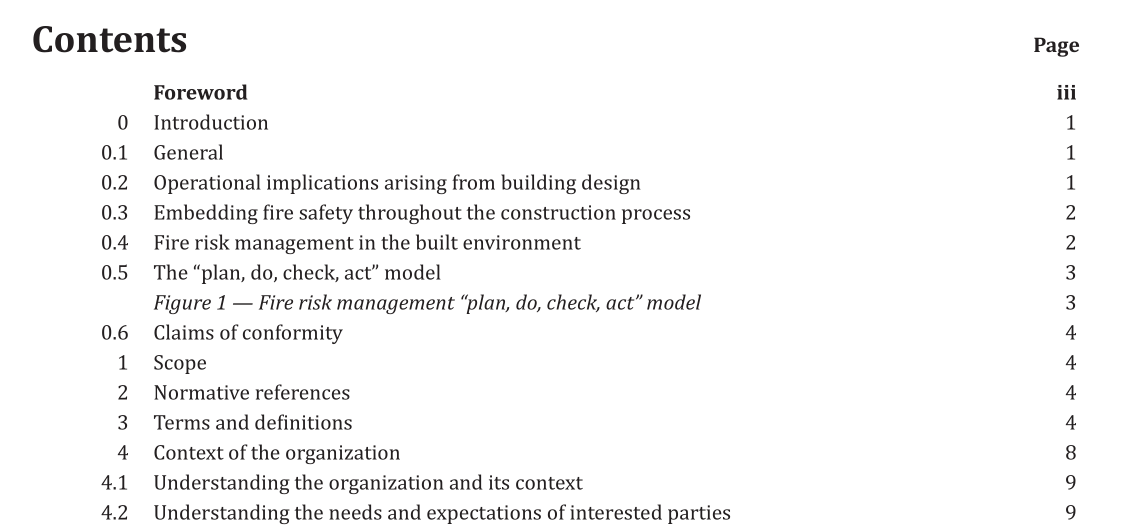BS 9997:2019 pdf download.Fire risk management systems — Requirements with guidance for use
In the early hours of 14 June 2017, a fire spread through Grenfell Tower in London. Seventy-two people died, many homes were destroyed and countless lives have been affected. Following this tragedy, a national programme of extensive testing of the cladding on other high-rise buildings revealed widespread use of aluminium composite materials which did not meet the limited combustibility requirements of building regulations guidance, and raised concerns for the safety of others. Further concerns soon came to light about the adequacy of the structural design of cladding systems when materials fell from a building in Glasgow. A subsequent series of fire and rescue service audits of tower blocks led to the temporary evacuation in London of the Chalcots Estate, Camden, and resulted in the discovery of structural safety issues with four buildings at the Ledbury Estate, Southwark. The Secretary of State for the Department for Communities and Local Government (DCLG) and the Home Secretary conducted an independent review of building regulations and fire safety in 2017, which culminated in a report [8] that was presented to Parliament in May 2018. A conclusion of this review was that principal designers and principal contractors have a critical role in embedding fire safety throughout the construction process. They assume primary ownership throughout the construction phase, and especially at handover to the occupation and maintenance phase. The adoption of BS 9997 is expected to improve accountability and help create an audit trail, ensuring that the management of all stages of design and construction can be tracked through robust change control processes. A formalized FRM system can define, document, implement and maintain procedures to ensure that an adequate level of fire safety information is developed and retained from land acquisition through to handover and occupation, so that every development provides an enhanced level of assurance to occupiers and other interested parties.
Once a building has been constructed, the completion of a fire risk assessment is a legislative requirement, but this is only the start of satisfying these requirements. It is also a legislative requirement that the findings of the fire risk assessment are acted upon and that the significant findings of the assessment (and the assessment itself) are kept up to date. For example, a fire risk assessor could highlight a number of critical failings in a building but, unless the management have the resource, motivation and method to correct these, the assessment has no effect on the improvement of fire safety.
BS 9997:2019 pdf download
